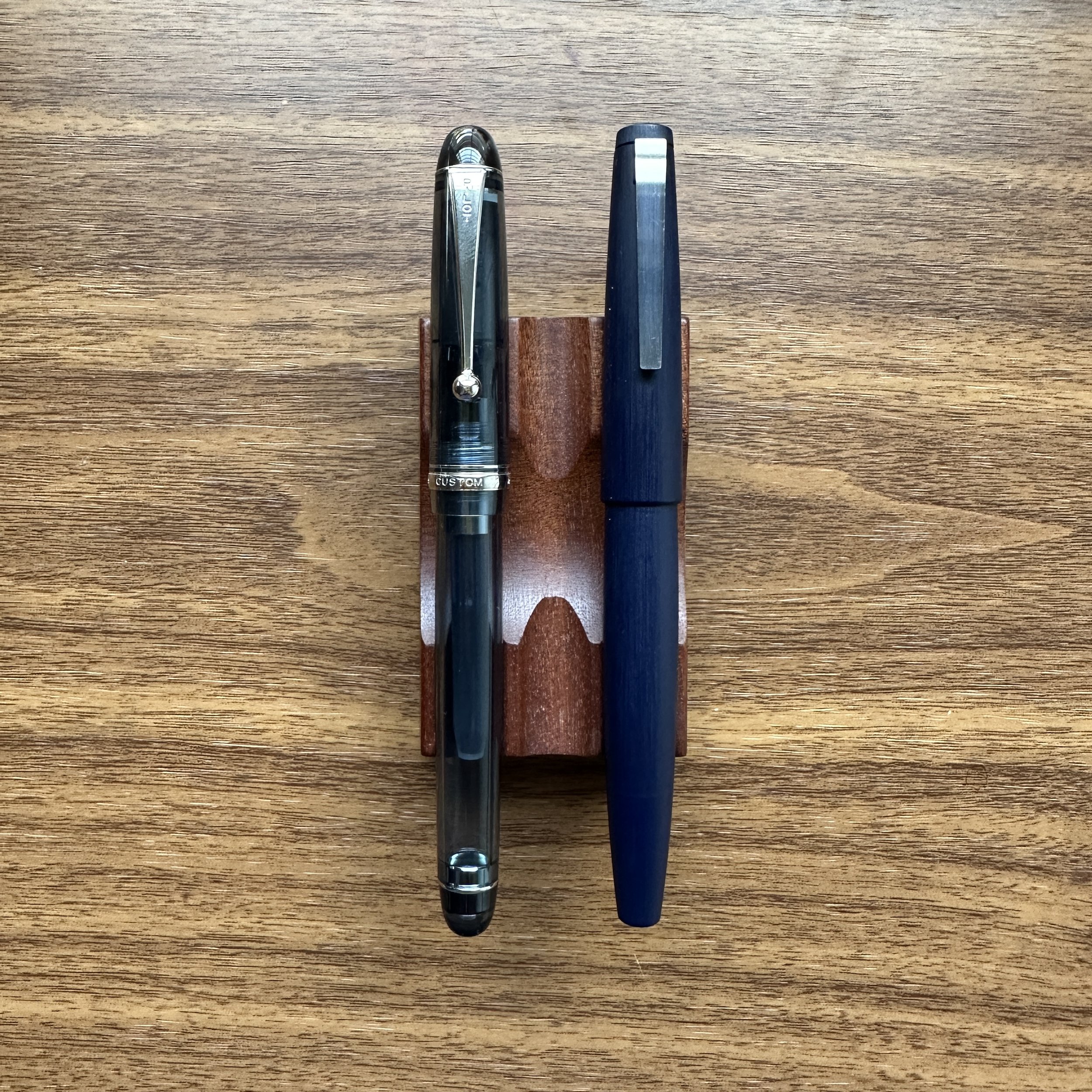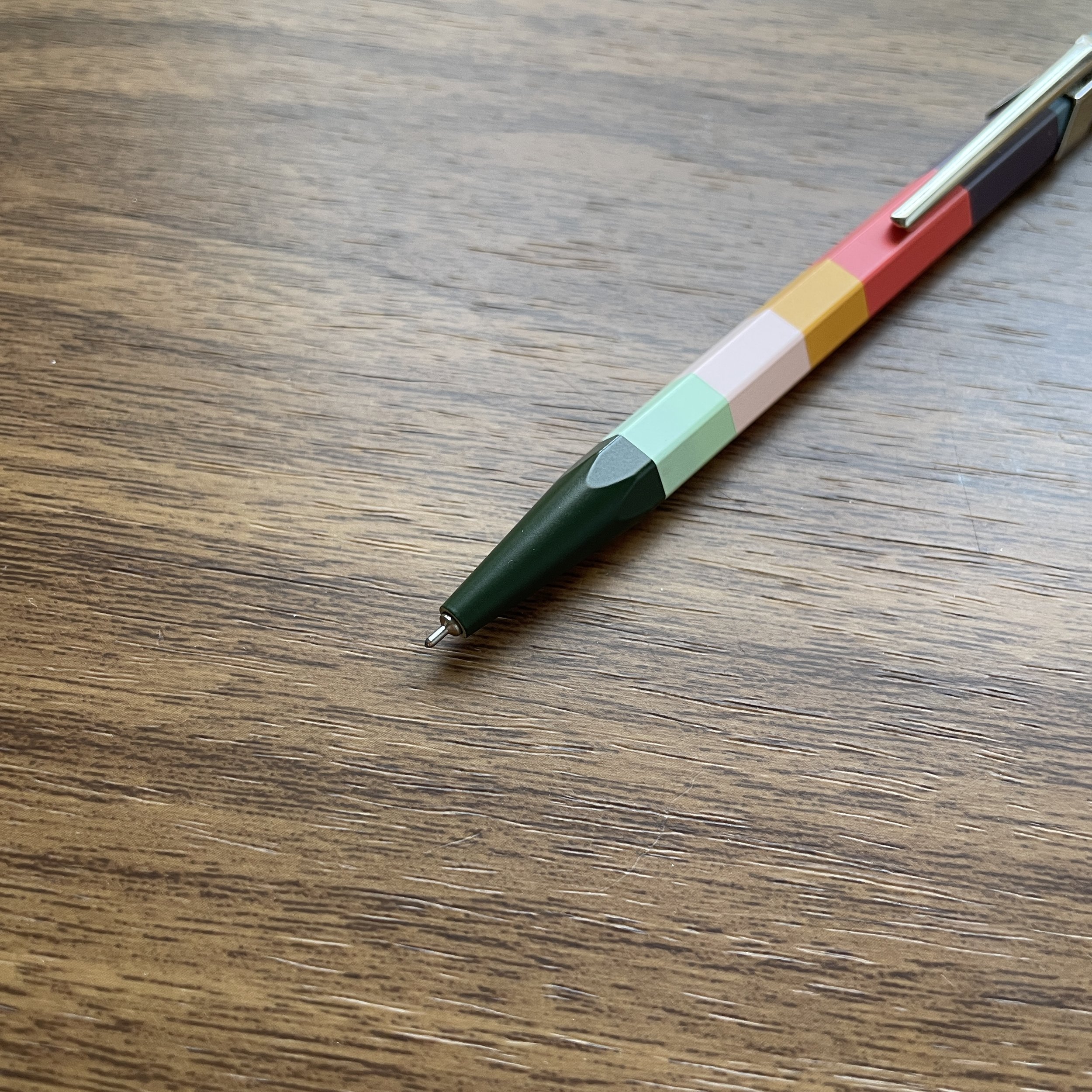When it comes to custom penmakers - especially those who display at pen shows - Shawn Newton is one of the originals. We've both been involved in the pen hobby/business for around the same amount of time (going on 13+ years?!?) and I've enjoyed watching Newton Pens grow and Shawn's lineup of pen models expand! To read more on the story behind Newton Pens, you can check out their website, as well as my earlier review of the custom Newton Shinobi I commissioned many years ago.
What makes the Hale unique is that the cap threads on to the very tip of the section and sits flush, compared to a typical fountain pen where the section sits inside the cap. See the comparison photos with the Newton Orville, below.
The pen I'm reviewing today is the Newton "Hale", a cylindrical-bodied pen with a short cap that first caught my eye at the 2021 Chicago Pen Show. This year, Shawn kindly let me take one home from Arkansas for review. It may not go back. I discovered that I actually enjoy this style of pen ("Short-cap pens"?) and it's possibly opened up a new category of products for me to try.
This “short-cap” style is a recent trend in penmaking, with many penmakers introducing variations on pens where, as here, the cap attaches to the end of the grip section, and, sometimes, where the pen features no traditional grip section at all and you hold the pen by the barrel. (Check out these pens from Tesori/HelloTello Studio, Mayfair, and Franklin-Christoph as additional examples.) The Hale does have separate grip area, though it's nontraditional in that it features a slightly tapered hourglass section that ends up flush with the rest of the pen and cap.
The Hale isn't just visually interesting - I find it insanely comfortable to write with. Initially, I had my doubts about this particular shape, but it didn't take long for those concerns to disappear, at least with the Hale. This slightly contoured grip area works for me, and the pen is well-balanced. For purposes of this review, I chose a "Concord"-style nib unit ground by Mark Bacas, which has a VERY fine tip akin to a Pilot PO ("Posting") nib. This style of pen, with a wider grip, offers a lot of control over your handwriting - or at least it feels that way to me - particularly important when you are writing with such a fine point.
Takeaways and Where to Buy
Count me a fan of the Newton Hale! Shawn's designs are well thought-out and well-executed, and this pen is no exception. The particular material used in the pen shown here is the same used in pens like the Leonardo Momento Zero Grande "Girasole/Sunflower", and one of my personal favorites. While I didn't use a Newton Pens nib for this review, it's worth mentioning that Shawn tunes all of his nibs before the pens ship, and they generally write very well.
From Left: Newton Pens Hale, Newton Pens Orville, and Newton Pens Shinobi.
The Hale starts at $170, featuring a stainless steel JoWo No. 6 nib unit. Shawn typically has inventory available for purchase on his website and at shows. While you can also commission fully custom pens, Shawn's a busy man and has quite the wait list, last time I checked! Personally, I enjoy shopping his show stock. Between shows he keeps busy making pens, and part of the fun for me is selecting from the various options he's chosen to make for himself. Come visit Shaw Newton and Newton Pens to see the Hale for yourself at the upcoming D.C. Pen Show, which will be held from August 3-6, 2023!
The pen featured in this review was loaned to me by Newton Pens for review purposes, and I was not compensated for this post. The Gentleman Stationer is supported entirely by purchases from the T.G.S. Curated Shop and pledges via the T.G.S. Patreon Program. To support the site, please consider visiting our store and checking out our offerings, including our recent product collaborations!



